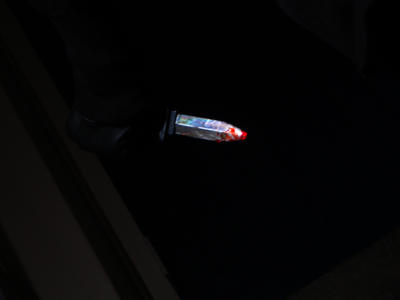I think that the purpose of the practical was to see if we knew the basics of continuity in film and if we could produce something that makes logical sense with several restrictions. We had very little time to 'script', storyboard and film the sequence with no chance to edit or review it during the shoot. We also had to include a range of shot types to make it interesting whilst also paying attention to everything so that it seemed continuous.
In my opinion, the finished sequence worked to an extent although with hindsight, a lot would be changed. The things I do like about this sequence are:
- The esthablishing shot works well at showing the location (outside, in a school playground) clearly.
- There are a variety of shot types; Long Shot, Mid - Shot, Mid - Close - Up, Over - The Shoulder.
- The camera movement was smooth in the first shot (the pan) and doesn't jerk around too much.
- These shot types are continuous; they flow between similar shot types instead of jumping directly from a Long - Shot to an Extreme - Close - Up.
- The narrative is simple and easy for a viewer to follow: girl walking, girl's friend distracts her, girl walks into a pole.
- The framing is good in the shots, most of the cut-off points remain the same in the shots, including those with camera or character movement.
- We kept to the 180 - Degree rule by staying on one side of the action so that the perspective didn't become too confusing.span>
Watching the sequence back I do see several areas for improvement, some could have been changed with hindsight, other would have to be done in editing:
- It's too fast, despite the simple narrative, this sequence moves so quickly that most viewers may not be able to follow the action clearly enough.
- In the second shot, the camera moves too much, this tracking crab is hard to do, we could have probably done with more practice doing it until it was smooth or found another way to make it smooth, e.g. something with wheels to push it on.
- The backgrounds are very busy and distracting, we could have tried to choose a better place to film this sequence as the background has too much going on in it. For example, the 4th shot has a game of netball in the background.
- The match on action isn't perfect, every time we stopped filming, we had to tell the actors to go back to where we thought they were when we stopped recording. This created several visible jumps for the characters in each shot, especially in from the 5th to 6th shots when they stop moving before walking into the pole.
- The sound is bad, this would have to be done in post - production, but the sound changes too much for each shot. Personally I would either want to do this on a day without wind or making a sound bridge and place it over the sequence.
- Some of the initial shots break the 30 - Degree rule because they appear so similar to each other, it looks like a jump or a glitch.
By doing this activity, I have learnt a lot about the importance of on-screen continuity and the attention to detail that filmmakers have to have. I now also know that sequences need to be made very clear, well esthablished and paced so that a viewer can follow it's narrative. Without these techniques being used, most films probably wouldn't make as much sense.

